Among the quarter million American women who undergo breast augmentation annually, the vast majority are happy with their results. However, for a variety of potential reasons, some women may choose to undergo revision or permanent removal of their implants.
Breast Implant Removal Before and After Photos
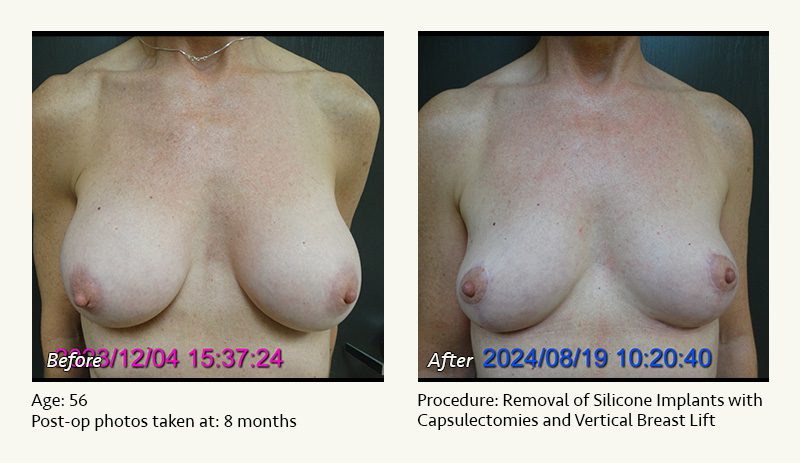
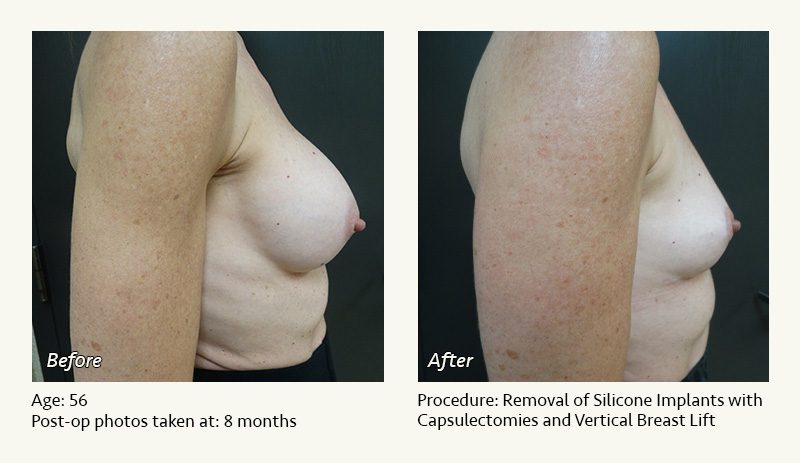
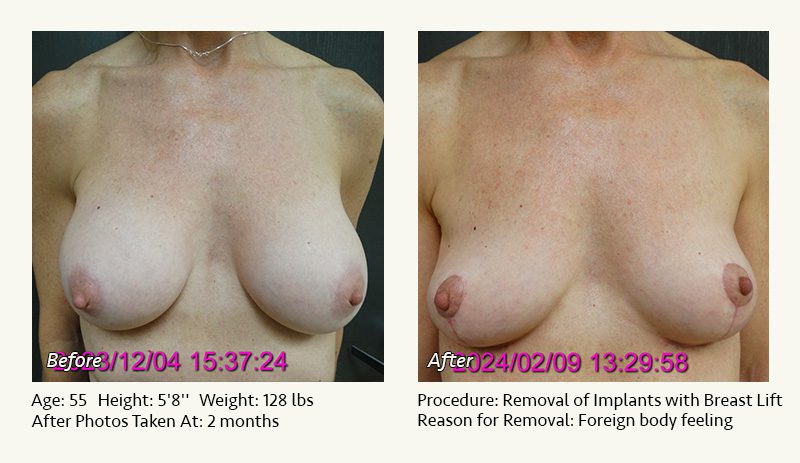
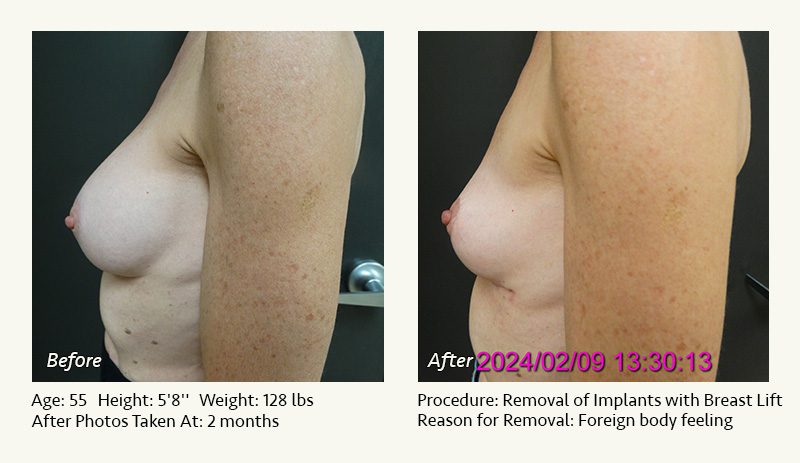
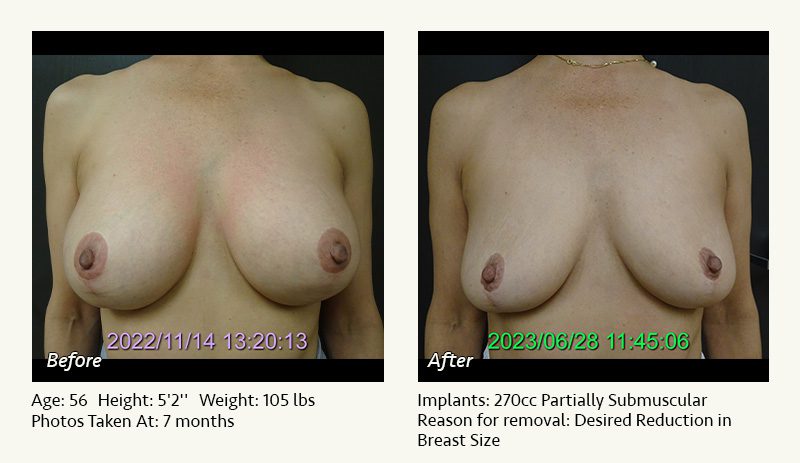
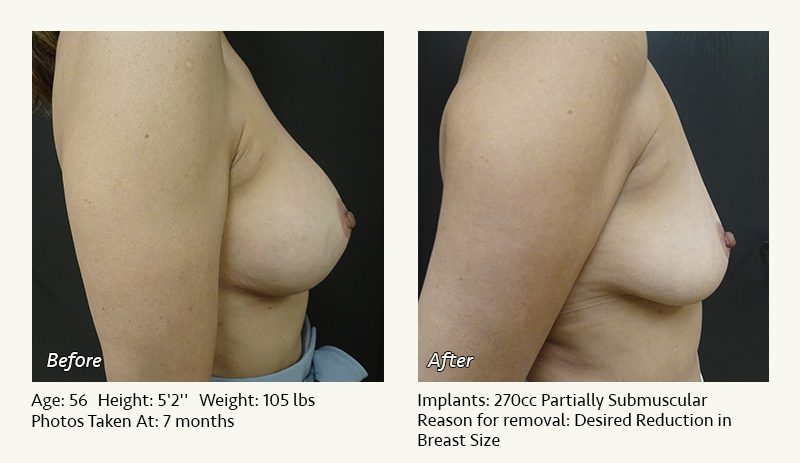
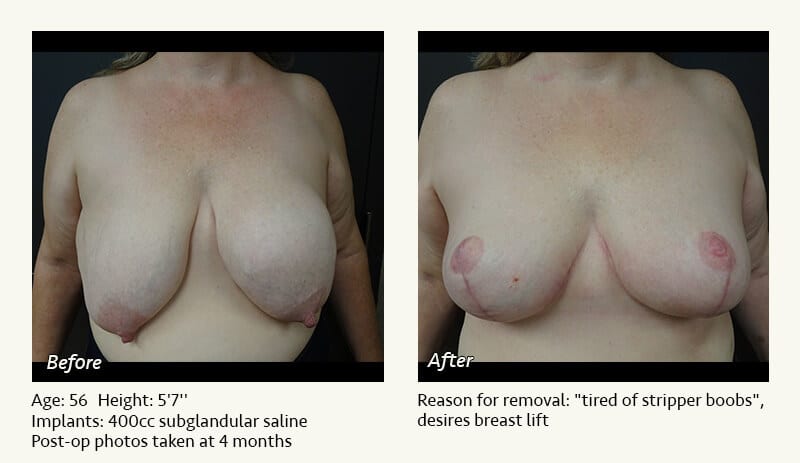
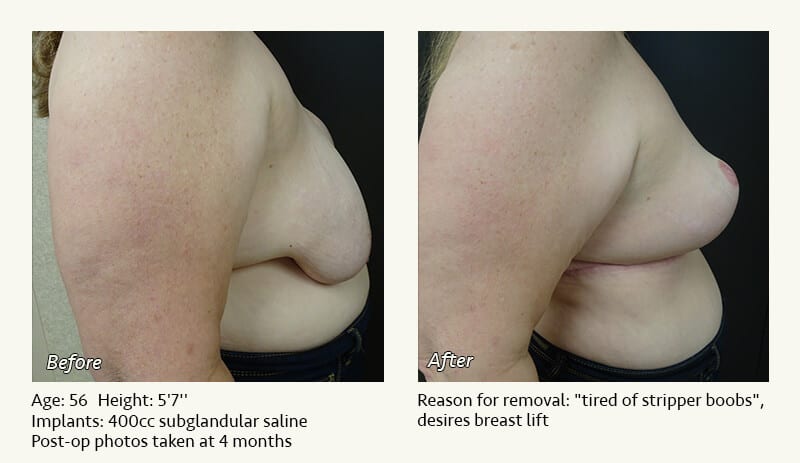
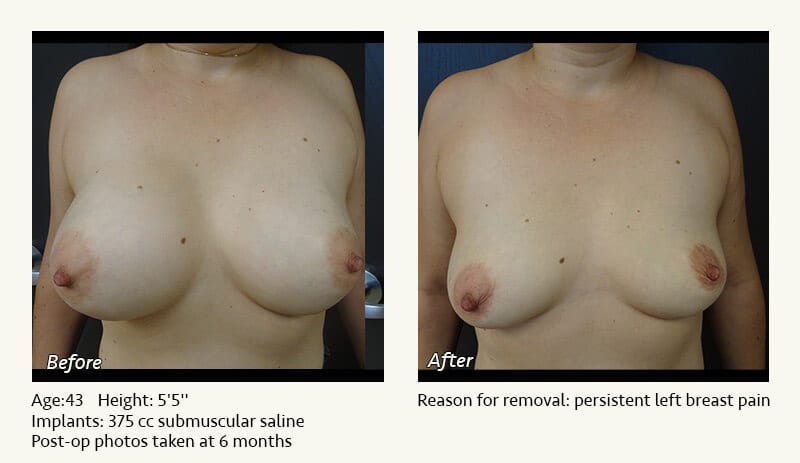
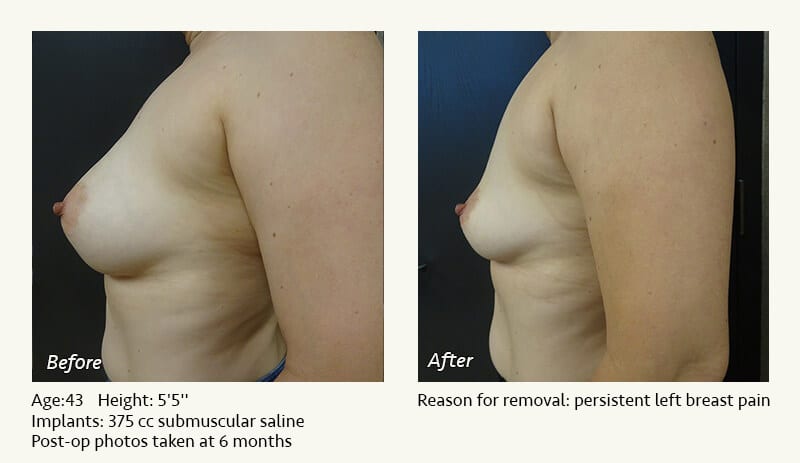
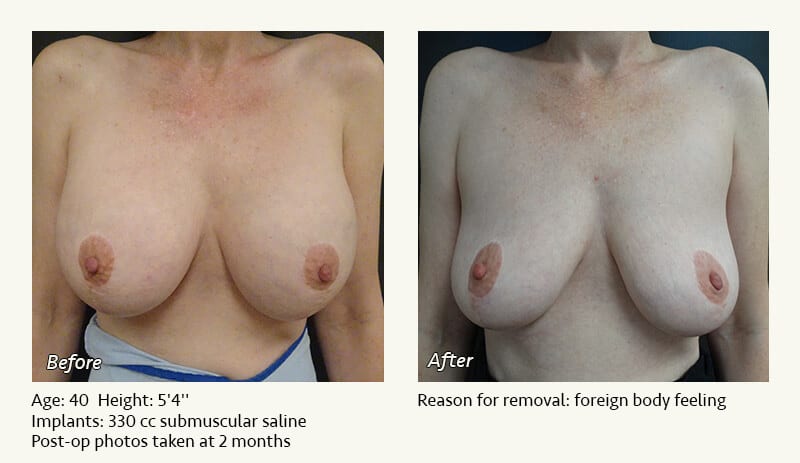
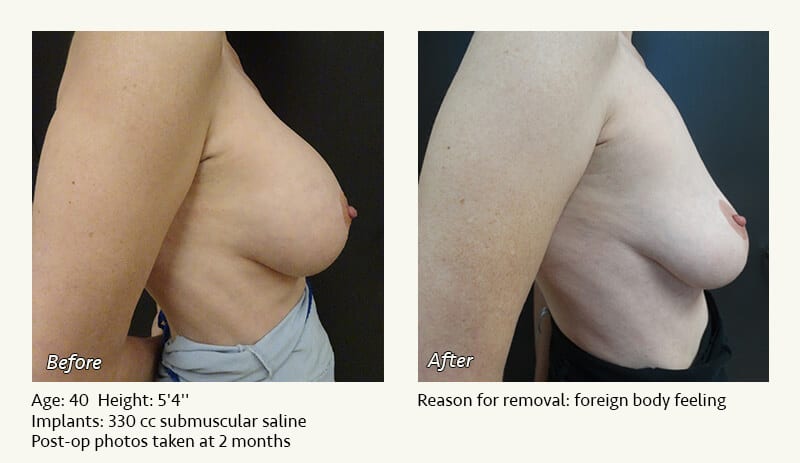
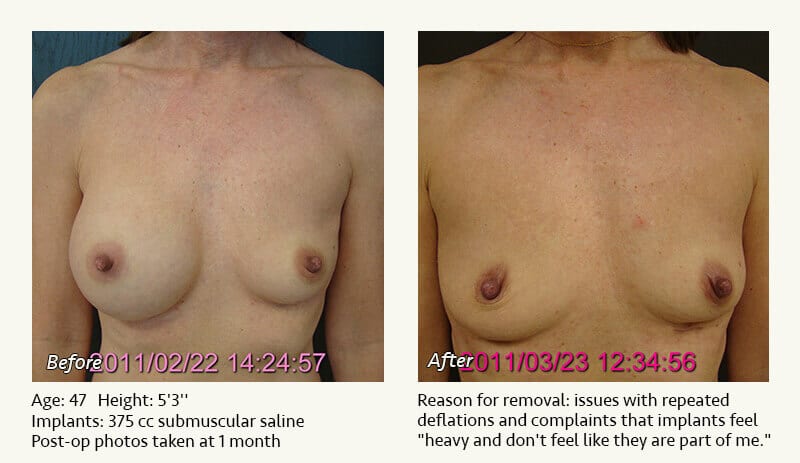
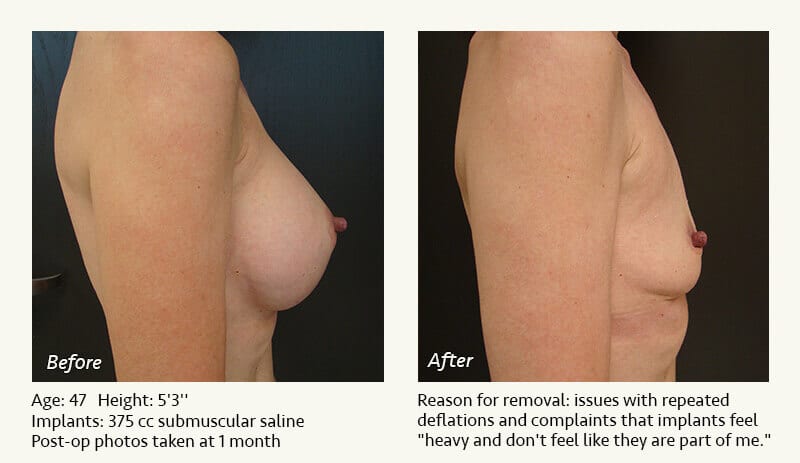
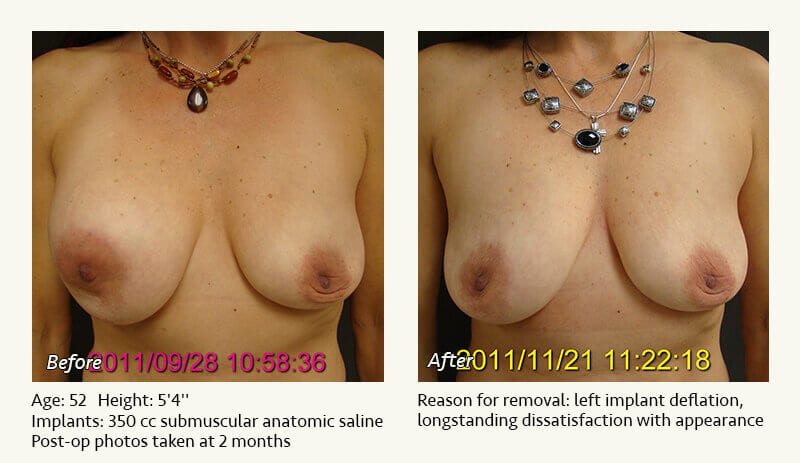
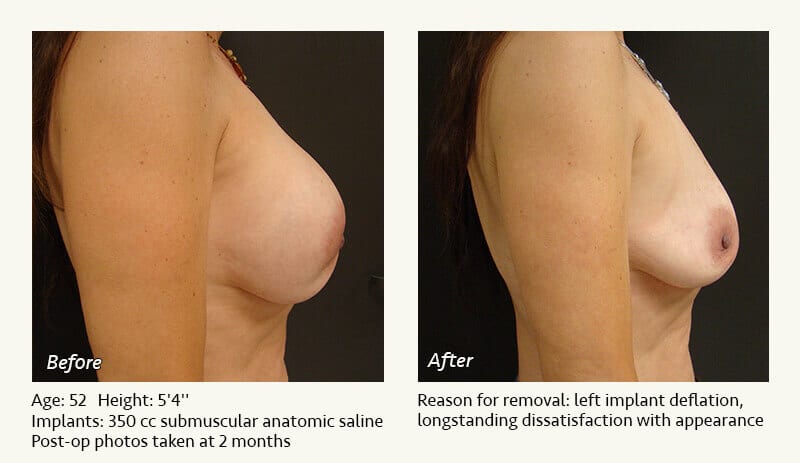
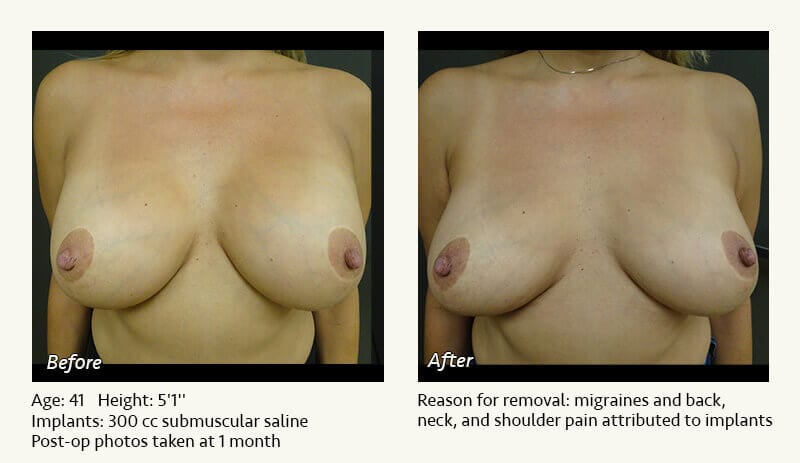
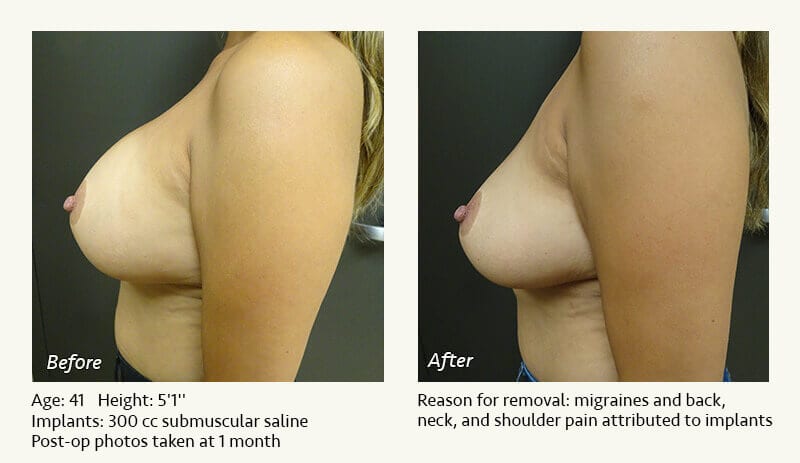
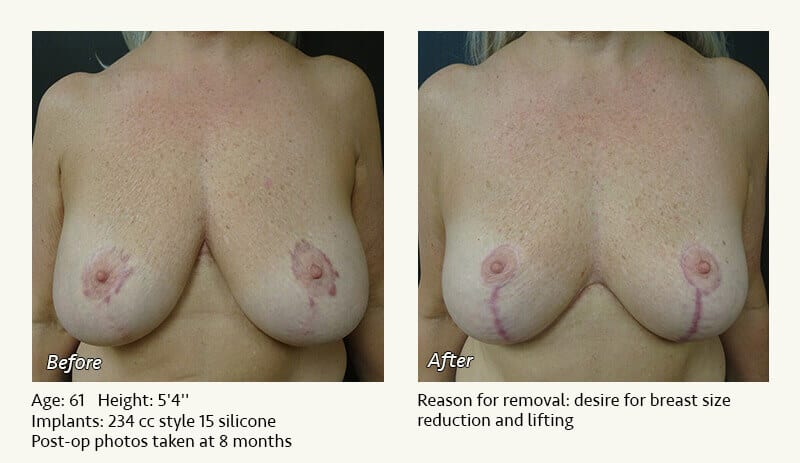
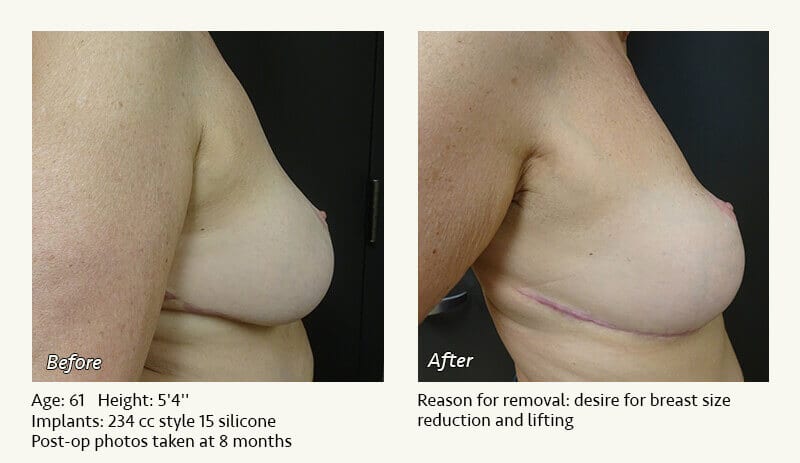
Permanent breast implant removal (explantation) may be done for the following reasons:
- Recurrent complications, such as infection or capsular contracture.
- Desire to avoid “foreign bodies.”
- Feeling that the breasts are too large or too heavy.
- Breast implant illness.
- ALCL (anaplastic large cell lymphoma).
Surgical options:
- Breast implant revision. Implant removal and replacement may be performed to address concerns such as desire for a change in implant size or type, dissatisfaction with implant position or asymmetry, excessive implant rippling, deflation, rupture, and capsular contracture. By placing new implants, Dr. Friedman is generally able to preserve the breast size and upper and inner breast fullness that would be sacrificed with implant removal.
- Breast implant removal. Breast implant removal is generally a straightforward day surgery procedure.
- Breast implant removal with capsulectomy. Any time that a foreign body (implant) is placed in your body, your body will respond by forming a capsule of scar tissue around the implant. This is a normal and desirable process that provides long term implant support. If desired, the capsule of scar tissue may be removed at the time of implant removal. This increases the duration, cost, and pain associated with surgery and is unnecessary in most women undergoing permanent implant removal.
- Breast implant removal with breast lift. If you have sagging of the breasts, breast lift may be performed, either at the time of implant removal or at a later date. While this will help the sagging and nipple position, the upper and inner breasts will still lose volume due to implant removal.
Dr. Friedman performs breast implant removal under general anesthesia on an outpatient basis. The procedure is performed in his nationally-accredited surgical facility, the West Plano Plastic Surgery Center on the campus of Texas Health Presbyterian Hospital of Plano. He uses physician (not nurses or technicians) to provide all anesthesia. The implants are typically removed through incisions in the creases beneath the breasts. The incisions are closed with internal, absorbable stitches. Temporary drainage tubes are placed (since implant removal leaves empty spaces that may accumulate fluid). A tight bra must be worn 24/7 for the first 4 to 6 weeks after surgery.
Pain is usually mild and responsive to prescription pain medication. Most women return to light activities in 3 to 5 days, though heavy lifting and chest workouts should be avoided for 6 weeks.
Q & A
-
Does Dr. Friedman recommend permanent breast implant removal?
For most women, Dr. Friedman feels that breast implant replacement is a better cosmetic choice than permanent breast implant removal. Breast implant removal results in loss of breast volume, especially along the upper and inner breasts. It may also increase the appearance of sagging of the breasts. In most women, the breasts look worse after breast implant removal.
-
What is breast implant illness?
Breast implant illness (BII) is a poorly understood disease that involves fatigue, headaches, brain fog, joint pain, and/or muscle pain. In most women, these symptoms are unrelated to breast implants. However, in a small subset, it is thought that these symptoms may be related to an autoimmune reaction to breast implants. Although silicone gel implants are the usual suspected cause, some women have described BII with saline implants.
-
How often does Dr. Friedman perform breast implant removal?
Due to his specialization in breast surgery and 25 years of experience, Dr. Friedman performs an average of 120 breast augmentations annually. Among these, he performs approximately 35 breast augmentation revisions each year, usually involving implant removal and replacement. Although Dr. Friedman does not routinely encourage permanent breast implant removal, he does perform the procedure regularly.
What is ALCL?
Breast implant-associated anaplastic large cell lymphoma is a rare disease that has affected over 500 women worldwide (among the millions who have breast implants). Recent evidence suggests that ALCL occurs exclusively in women with textured implants (rather than smooth implants). For this reason, Dr. Friedman rarely places textured breast implants. The most common signs of ALCL are a fluid collection around a breast implant (causing a very swollen breast) or a breast mass. Women with either of these problems should seek medical attention. For more information about ALCL, please click this link .